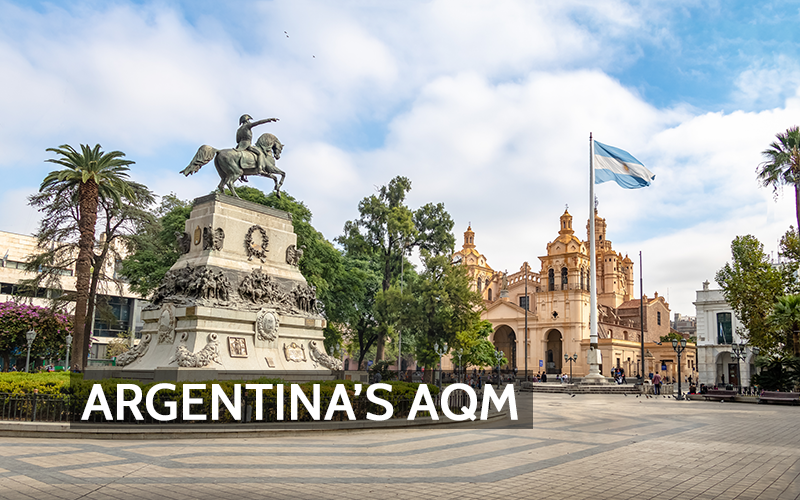Air quality monitoring and regulation have become increasingly important in Argentina, a country balancing rapid urbanization and industrial growth with environmental sustainability. This article delves into Argentina’s government regulations on air quality, their historical context, future prospects, private initiatives, and the challenges posed by urban development.
Government Regulations for Air Quality in Argentina
Argentina’s air quality regulations are shaped by national laws and international commitments. The cornerstone of Argentina’s environmental policy is Law 24,051, the National Law of Hazardous Waste, enacted in 1991. This law includes provisions for controlling air emissions from industrial activities. In addition, Law 25,675, also known as the General Environmental Law, established in 2002, provides a broader framework for environmental management, including air quality monitoring and public access to environmental information.
The Argentine government has also implemented specific standards for pollutants such as particulate matter (PM10 and PM2.5), nitrogen dioxide (NO₂), and sulfur dioxide (SO₂). These standards align with guidelines from the World Health Organization (WHO) and are enforced by the Ministry of Environment and Sustainable Development. Provinces and municipalities are responsible for localized monitoring and regulation, creating a multi-tiered approach to air quality management.
Historical Context for Air Quality Regulations in Argentina
Air quality management in Argentina began gaining prominence in the late 20th century, coinciding with increased industrialization and urbanization. Early regulations focused on reducing emissions from industrial sources, particularly in Buenos Aires and other major cities where pollution levels were highest. In the 1990s, the implementation of Law 24,051 marked the first significant national effort to address air pollution.
By the 2000s, growing public awareness and international environmental agreements, such as the Kyoto Protocol, prompted the government to enhance its regulatory framework. Law 25,675 was a milestone, as it emphasized the precautionary principle and the need for comprehensive environmental planning. Over time, Argentina has also adopted regional initiatives, such as the Latin American Air Quality Initiative, to improve monitoring and share best practices with neighboring countries.
Looking Forward
Argentina is at a pivotal moment in its air quality journey, with several initiatives underway to improve monitoring and enforce stricter regulations. The government’s commitment to the Paris Agreement shows its intent to reduce greenhouse gas emissions and other pollutants. Plans such as the National Climate Change Action Plan include measures to transition to renewable energy sources and promote cleaner transportation options.
Technological advancements are expected to play a critical role in future air quality regulation. The deployment of smart sensors and satellite-based monitoring systems will enable real-time data collection and more effective enforcement of standards. Public-private partnerships are also being explored to fund these technological upgrades and expand Argentina’s air quality monitoring network.
Private Initiatives and Nonprofit Contributions
While government regulations provide the backbone of air quality management, private initiatives in Argentina are emerging as valuable complements. ETER is a community-built open-source air quality monitor that measures particle pollution and is geared toward aiding teachers in air quality education.
Nonprofit organizations also play a vital role. The Foundation for the Environment and Natural Resources (FARN) advocates for stricter air quality standards and conducts educational campaigns to raise public awareness. Grassroots movements in heavily polluted areas, such as the Matanza-Riachuelo Basin, have successfully pressured authorities to improve air quality monitoring and remediation efforts.
Challenges in Air Quality Monitoring
Argentina faces several challenges in maintaining and improving air quality. Urban centers like Buenos Aires and Córdoba experience high levels of vehicular emissions due to aging public transportation systems and traffic congestion. Industrial hubs contribute to localized air pollution, particularly in areas with lax enforcement of regulations.
Another challenge lies in the fragmentation of responsibilities between national, provincial, and municipal governments. This often leads to inconsistencies in data collection and policy implementation. Addressing these issues requires greater coordination and investment in unified air quality monitoring systems.
The Impact of Air Quality on Urban Development
Urban development poses both challenges and opportunities for air quality in Argentina. The growth of mega-cities has exacerbated pollution levels, but it has also spurred innovation. Cities like Buenos Aires are adopting green urban planning initiatives, including the expansion of bike lanes and electric bus fleets, to reduce their environmental footprint.
Public awareness campaigns have also gained traction, encouraging citizens to reduce their contribution to air pollution. Initiatives like “Car-Free Days” and community tree-planting programs highlight the growing role of civic engagement in improving air quality.
Argentina’s approach to air quality monitoring and regulation reflects its commitment to balancing economic development with environmental sustainability. While significant progress has been made through government policies, private initiatives, and community efforts, challenges remain in enforcing standards and addressing the root causes of pollution. By leveraging technology, fostering collaboration, and prioritizing public awareness, Argentina can pave the way for a cleaner and healthier future.
Related Article:
Spain’s Air Quality Management: Today’s Regulations and Tomorrow’s Outlook
References:
-
- https://climate-laws.org/geographies/argentina
- https://medium.com/read-write-participate/a-green-approach-to-open-source-in-buenos-aires-3331861a1bc1
- https://globalabc.org/node/105
- https://www.unep.org/argentina
- https://farn.org.ar/
- https://oecd-opsi.org/innovations/ba-climate-action/
- https://glcn-on-sp.org/cities/buenos-aires/


